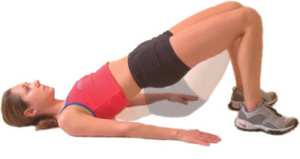

MedFriendly®


Bridging
Bridging has several definitions in the field of
medicine. In nursing, it is used as a general term to
refer to a technique that supports a body part.
However, it also refers to a specific technique in
which a nurse or other health care provider positions
a patient so that when the patient is lying on a
mattress, he/she does not have any pressure on
outwardly projecting bony parts of the body.
Bridging exercise for muscle
strengthening.
FEATURED BOOK: Manual Physical Therapy of the Spine
This is done by distributing the patient's body weight over a large surface or area in
various ways, such as using pillows, pads, or long pillows made of foam rubber. This
technique is called "bridging" because much like building a bridge, weight is being
distributed and support is given to important parts. It is commonly used in nursing homes
and rehabilitation centers. Bridging is also the same for a specific technique used in
physical medicine and rehabilitation centers to strengthen muscles of the abdomen and
legs. During this technique, the patient reclines with the knees bent, plants the feet on a
firm surface, and lifts the buttocks off the surface.
In cardiology, bridging refers to narrowing of the left anterior descending coronary artery.
An artery is a type of blood vessel that carries blood away from the heart. The left
anterior (front) descending blood vessel is a type of blood vessel that supplies blood to
the heart. Bridging comes from the Anglo-Saxon word "brycg" meaning "bridge."
"Where Medical Information is Easy to Understand"™















